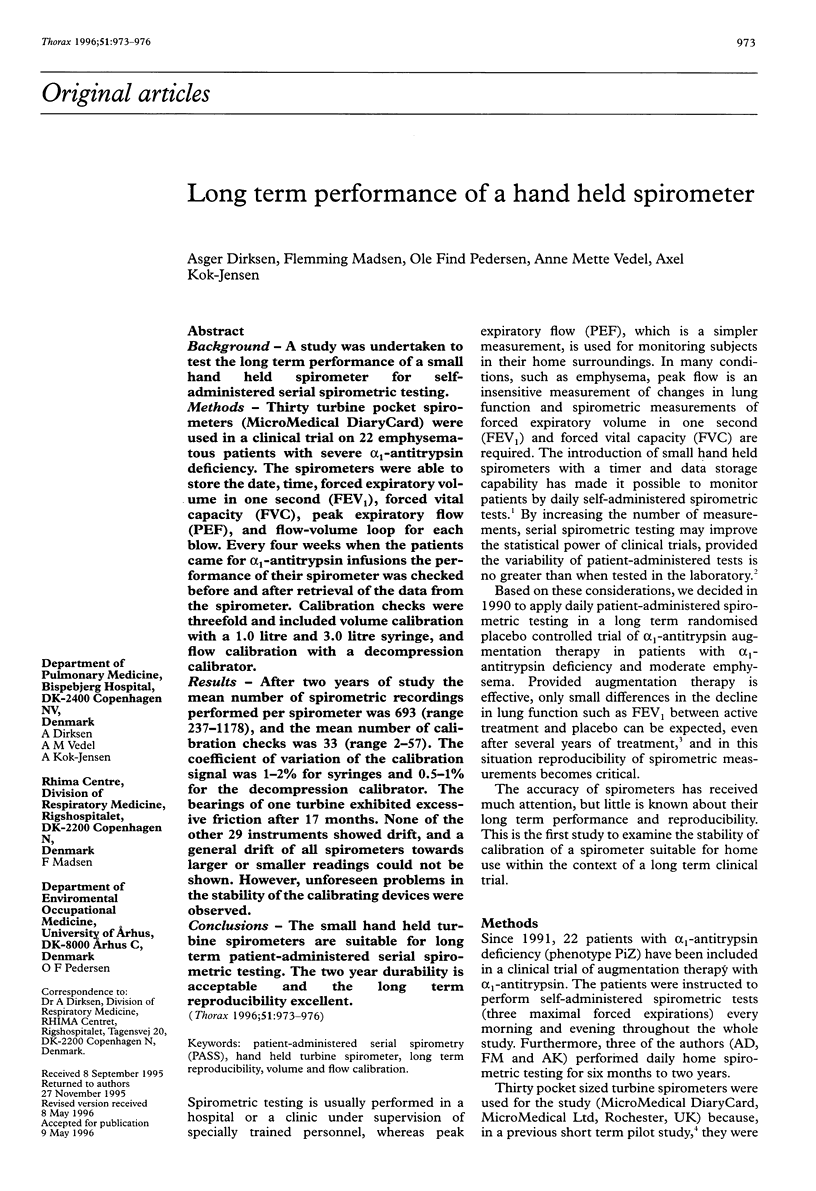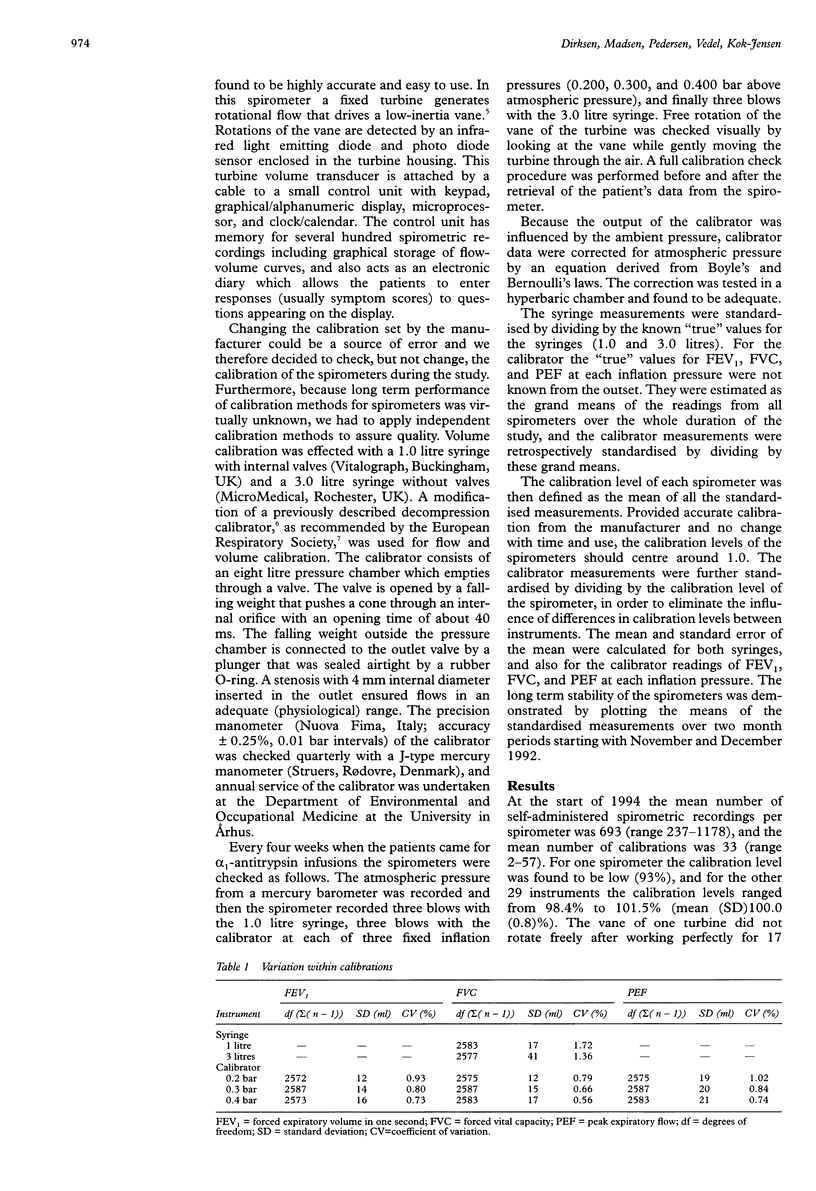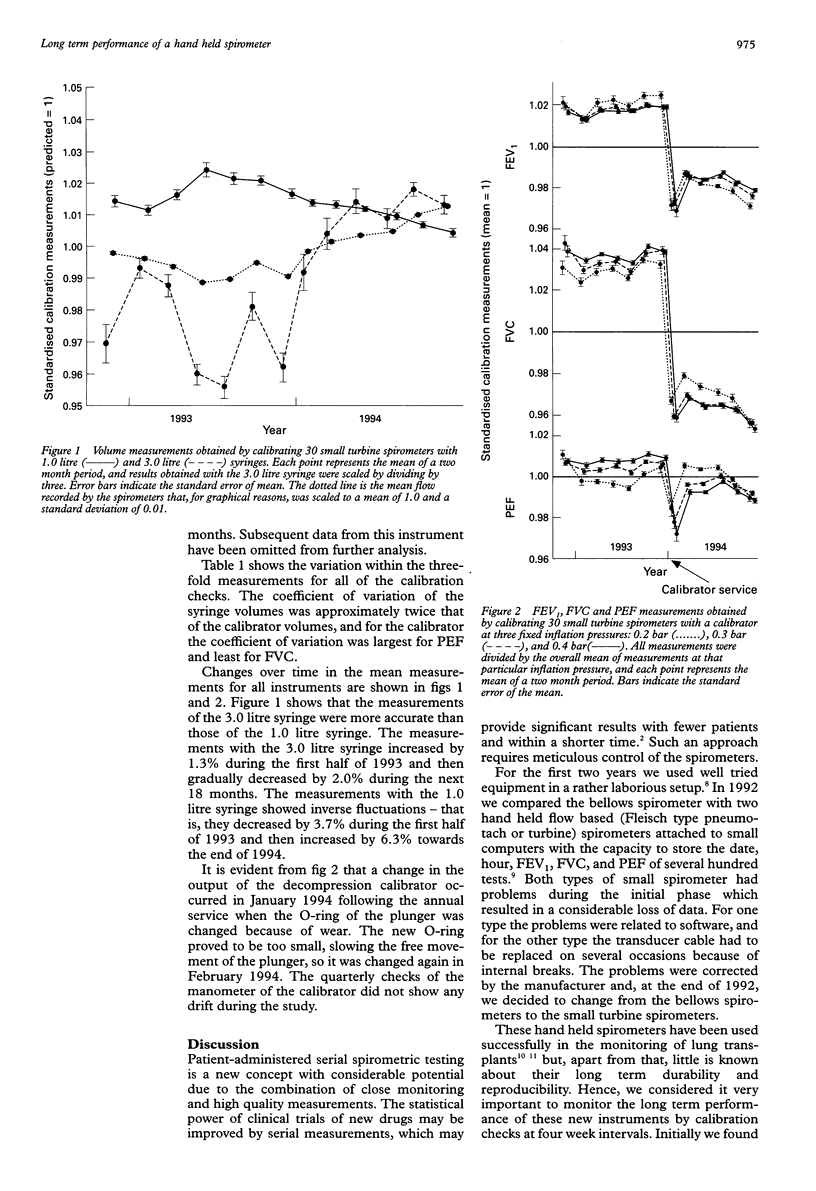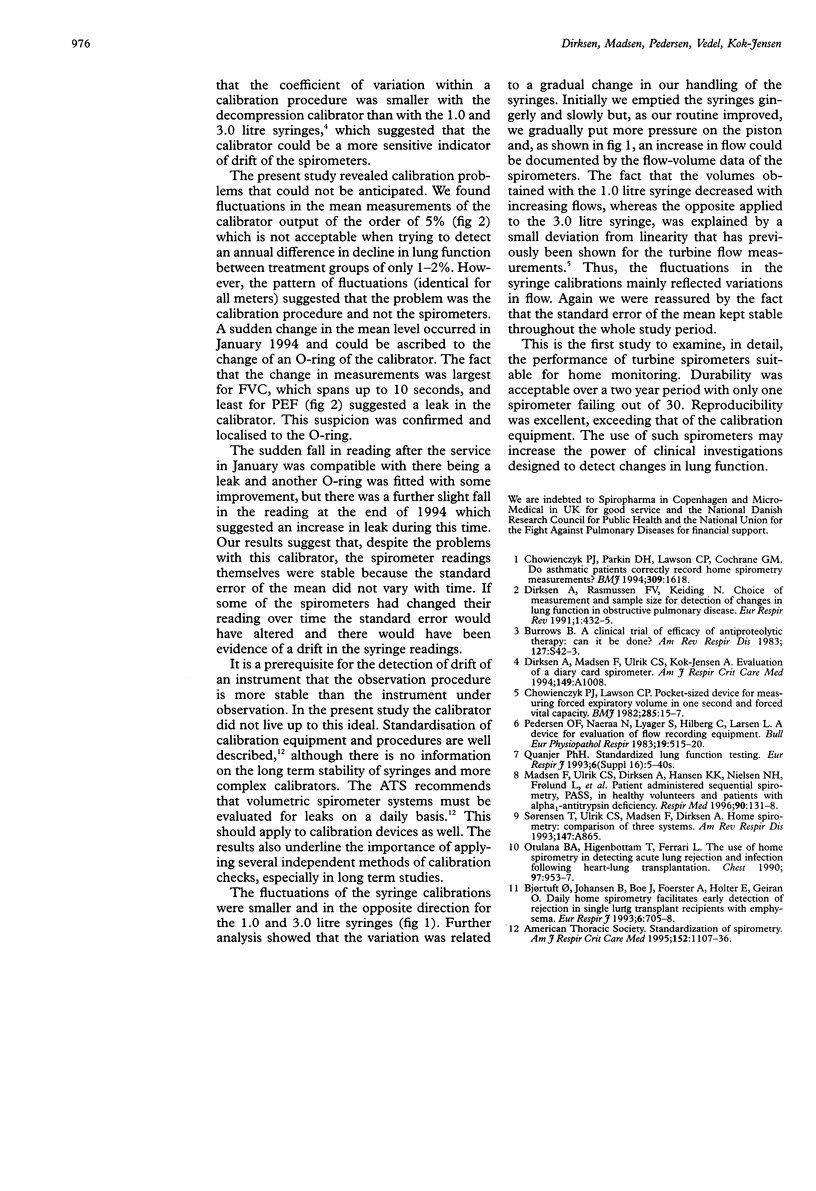Abstract
BACKGROUND: A study was undertaken to test the long term performance of a small hand held spirometer for self-administered serial spirometric testing. METHODS: Thirty turbine pocket spirometers (MicroMedical DiaryCard) were used in a clinical trial on 22 emphysematous patients with severe alpha 1-antitrypsin deficiency. The spirometers were able to store the date, time, forced expiratory volume in one second (FEV1), forced vital capacity (FVC), peak expiratory flow (PEF), and flow-volume loop for each blow. Every four weeks when the patients came for alpha 1-antitrypsin infusions the performance of their spirometer was checked before and after retrieval of the data from the spirometer. Calibration checks were threefold and included volume calibration with a 1.0 litre and 3.0 litre syringe, and flow calibration with a decompression calibrator. RESULTS: After two years of study the mean number of spirometric recordings performed per spirometer was 693 (range 237-1178), and the mean number of calibration checks was 33 (range 2-57). The coefficient of variation of the calibration signal was 1-2% for syringes and 0.5-1% for the decompression calibrator. The bearings of one turbine exhibited excessive friction after 17 months. None of the other 29 instruments showed drift, and a general drift of all spirometers towards larger or smaller readings could not be shown. However, unforeseen problems in the stability of the calibrating devices were observed. CONCLUSIONS: The small hand held turbine spirometers are suitable for long term patient-administered serial spirometric testing. The two year durability is acceptable and the long term reproducibility excellent.
Full text
PDF



Selected References
These references are in PubMed. This may not be the complete list of references from this article.
- Bjørtuft O., Johansen B., Boe J., Foerster A., Holter E., Geiran O. Daily home spirometry facilitates early detection of rejection in single lung transplant recipients with emphysema. Eur Respir J. 1993 May;6(5):705–708. [PubMed] [Google Scholar]
- Burrows B. A clinical trial of efficacy of antiproteolytic therapy: can it be done? Am Rev Respir Dis. 1983 Feb;127(2):S42–S43. doi: 10.1164/arrd.1983.127.2P2.S42. [DOI] [PubMed] [Google Scholar]
- Chowienczyk P. J., Lawson C. P. Pocket-sized device for measuring forced expiratory volume in one second and forced vital capacity. Br Med J (Clin Res Ed) 1982 Jul 3;285(6334):15–17. doi: 10.1136/bmj.285.6334.15. [DOI] [PMC free article] [PubMed] [Google Scholar]
- Chowienczyk P. J., Parkin D. H., Lawson C. P., Cochrane G. M. Do asthmatic patients correctly record home spirometry measurements? BMJ. 1994 Dec 17;309(6969):1618–1618. doi: 10.1136/bmj.309.6969.1618. [DOI] [PMC free article] [PubMed] [Google Scholar]
- Madsen F., Ulrik C. S., Dirksen A., Hansen K. K., Nielsen N. H., Frølund L., Viskum K., Kok-Jensen A. Patient-administered sequential spirometry in healthy volunteers and patients with alpha 1-antitrypsin deficiency. Respir Med. 1996 Mar;90(3):131–138. doi: 10.1016/s0954-6111(96)90154-7. [DOI] [PubMed] [Google Scholar]
- Pedersen O. F., Naeraa N., Lyager S., Hilberg C., Larsen L. A device for evaluation of flow recording equipment. Bull Eur Physiopathol Respir. 1983 Sep-Oct;19(5):515–520. [PubMed] [Google Scholar]


